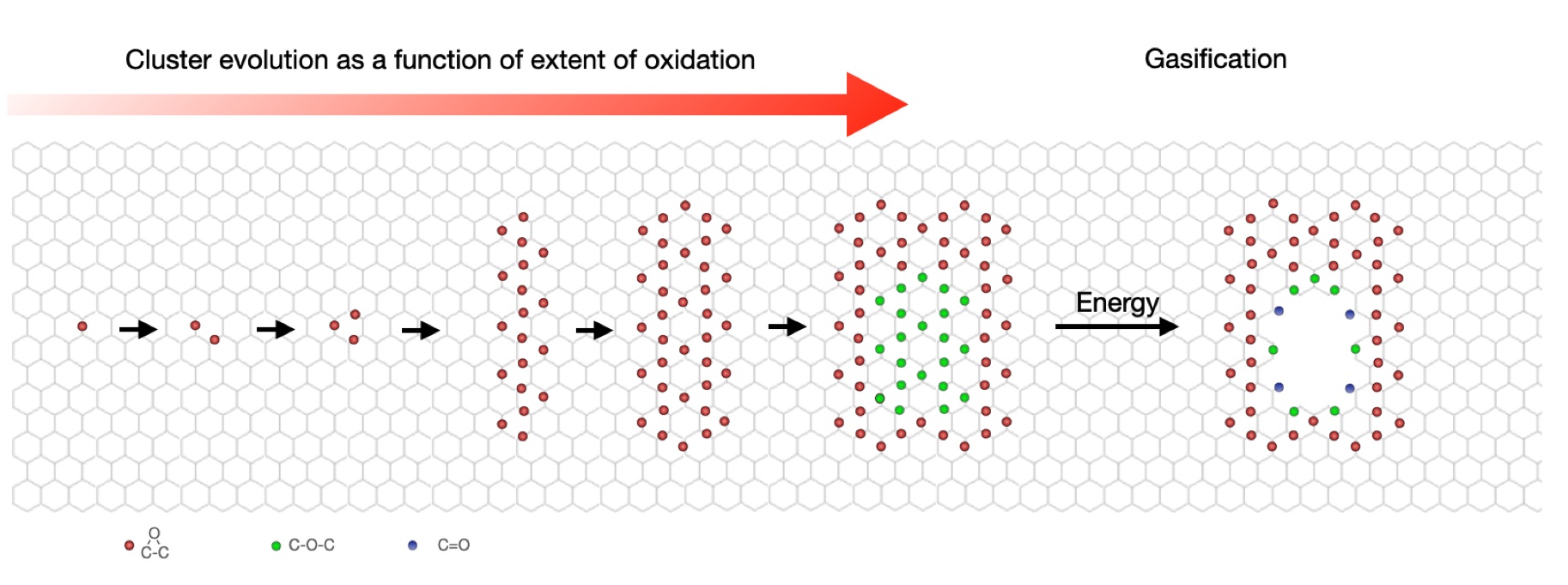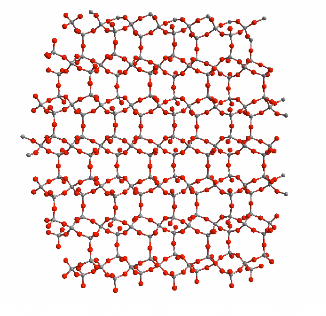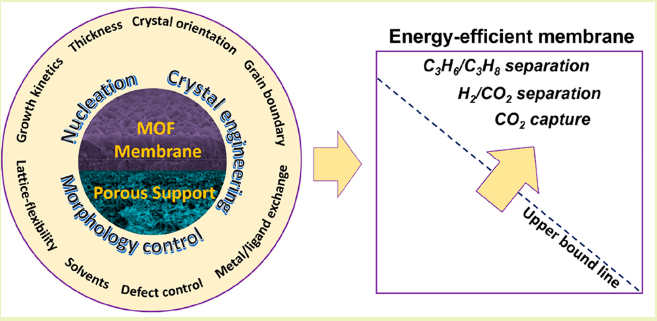The Laboratory of Advanced Separations (LAS) is engaged in the material chemistry of two-dimensional nanoporous materials leading to high-performance membranes that significantly exceed the performance limit of the polymeric membranes, making the separation processes for gases and vapors highly energy-efficient. The synthesis of these membranes amounts to synthesizing the thinnest-possible molecular-selective barriers that are stable in the operating conditions. Naturally, a two-dimensional (2D) film hosting molecular-selective pores is the ultimate membrane because the flux through the membrane is inversely proportional to the membrane thickness.
To realize these 2D membranes, LAS has established a multidisciplinary program in chemistry, material science, and chemical engineering, focusing on the synthesis, processing, and characterization of inorganic, porous 2D materials. Currently, our focus is:
- Generation of Å-scale pores in graphene by top-down and bottom-up synthesis techniques. Understanding the mechanism of pore formation.
- Scale-up of graphene membrane for carbon capture. We are now working on roll-to-roll production of porous graphene membranes, thanks to large Solutions4Sustainability funding by EPFL for cutting the CO2 footprint of EPFL.
- Synthesis of 2D MOF films with thickness down to a single unit cell.
- 2D zeolite nanosheets and their films
Porous graphene film with Å-scale pores
Å-scale pores in graphene constitute the thinnest possible permselective layer. The single-atom thickness of the pore translates into extremely small molecular diffusion path length and consequently high permeance. These pores can be decorated with functional groups to tailor the adsorption of probe molecules, and hence, one can access rapid as well as selective molecular transport. A recent review by our group on this field can be found in (Accounts of Material Research 2022), and in the book chapter of Two-Dimensional-Materials-Based Membranes.

Our group is working on four key design elements for achieving gas sieving from porous graphene:
- Incorporation of Å-scale pores by scalable techniques: We have demonstrated that ozone is an excellent choice for this where pores evolve from oxygen (epoxy, ether) clusters grafted by ozone. We show that oxidation of graphene proceeds by systematic cooperative assembly of epoxy on graphene lattice followed by gasification events to relax the strain. Various aspects of this mechanism is highlighted in the following papers: JACS Au 2022, Science Advances 2021, Advanced Materials 2022, Physical Review Letters 2023, JACS Au 2023. We have been also successful in tuning the pore size in Å-regime at the rate of ~1 Å/min by CO2 expansion (Angewandte Chemie Int. Edi. 2022).

- A narrow pore size distribution: While we hope that one day we can incorporate monomodal pores in graphene, it remains elusive. Typically, a lognormal distribution is observed. We are developing methods, inspired by our understanding of cluster formation and evolution to tune the pore size in the right range for a given separation challenge. Check our some of our work in this direction (Science Advances 2019, Science Advances 2021, Advanced Materials 2022, ACS Nano 2021, PNAS 2021).
- A high density of pores: This brings us to the realm of traditional chemical engineering reaction kinetics. One deals with the tradeoff between pore density and the propensity of pore-pore coalescence. For this, we are looking to investigate creative ways to prevent coalescence. One way to manage nonselective defect from coalesced pore is to control support resistance and prevent gas-phase transport (Advanced Functional Materials 2020).
- Pore functionalization: This is a great tool to modify pores bringing adsorption selectivity into play. While we have reported functionalization with oligomeric chains (Energy & Environmental Sciences 2019), we are highly interested in heteroatomic doping.
- Scale-up: This is the grand challenge in the field. We were the first one to report a macroscopic gas separation membrane based on single-layer graphene (Nature Communications 2018). Later, we reported centimeter-scale membranes (Journal of Membrane Science 2021), and now we have developed 250 cm2 coupons as part of an industry-sponsored pilot plant project.
Beyond gas separations, there are many promising application of porous graphene with Å-scale holes. Recently, we showed that positioning porous graphene at the liquid-vapor interface of water induces a strong confinement of water molecule, disrupting hydrogen bond network and leading to large enhancements in evaporation rate (ACS Nano 2022). The pores in graphene can also be used to obtain attractive selectivity in terms of ion-ion separation. These are also very attractive for blue energy (osmotic power generation).
Zeolite nanosheets based membranes
Nanometer-thick crystalline nanosheets of zeolites possessing a high density (1014 pore/cm2) of precise size-sieving pores are an ideal building block of inorganic membranes (Science 2011, Advanced Materials 2015). We are working on challenges related to the exfoliation of layered zeolite; synthesis of dispersed suspension, and finally fabrication of pinhole-free nanosheet film. We are pretty interested in understanding molecular transport mechanisms and the contribution of transport from intrinsic 2D pores and the intersheet gap. So far, we have demonstrated that sodalite nanosheets (RUB-15) can be prepared as 8 Å thick monolayers (Nature Materials 2021). We have also demonstrated that zeolite films can be prepared on polymeric support (Journal of Membrane Science 2023), and by using the entire processing step for membrane fabrication at room temperature (ACS Sustainable Chemistry & Engineering 2023). We are now looking to extend this concept to other promising frameworks.

Morphology and defect engineering of metal-organic frameworks (MOFs)
MOFs are attractive candidate for membrane fabrication because one can synthesize several membranes with varying pore-size attributing to the versatile reticular chemistry of MOFs (see our review in ACS Sustainable Chemistry & Engineering 2019). In the past, we have reported several novel techniques for rapid crystallization of thin MOF films, including the first demonstration of electrochemical MOF synthesis (Advanced Functional Materials 2018). We continue to explore synthesis protocols that are simple, scalable, and allow control on tuning MOF morphology and crystallinity (Journal of Material Chemistry A 2020). We also reported rapid heating as a versatile method to introduce linker-vacancy defects in MOFs (ZIF-8), which was used to restrict its lattice flexibility (Advanced Materials 2019). We remain highly interested in this direction as such an approach can be widely applied to tune lattice parameters and hence lattice strain (Chemistry of Materials 2021). We are interested in developing MOFs as ultimate membranes, that is MOF films in 2D morphology down to the thickness of a single unit cell. Check out our recent paper in Nature Materials on the first report of 2D ZIF film (Nature Materials 2023, to be updated soon).
